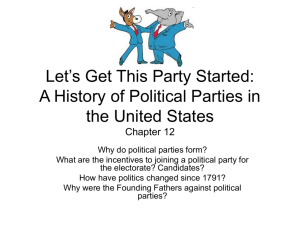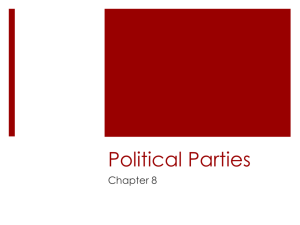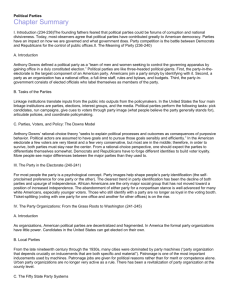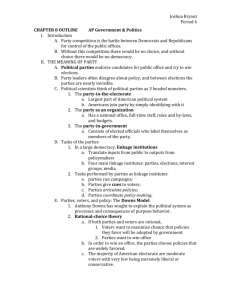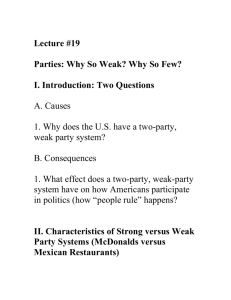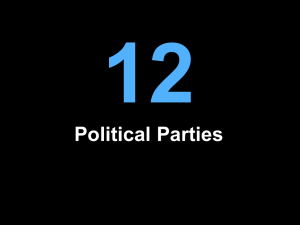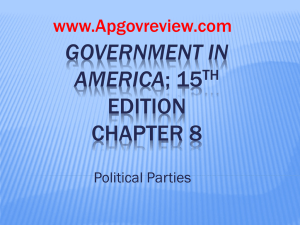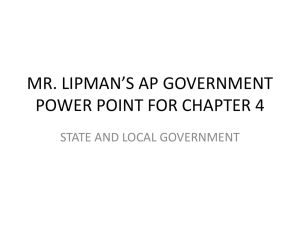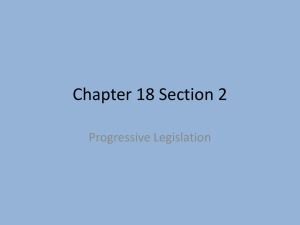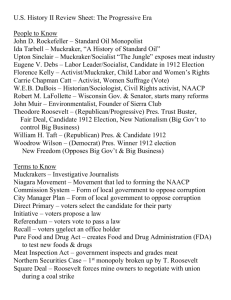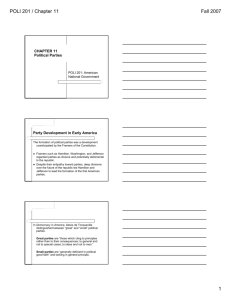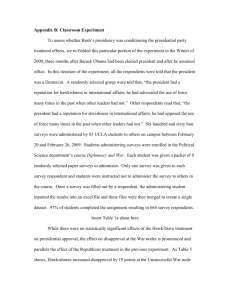MS Word Format
advertisement
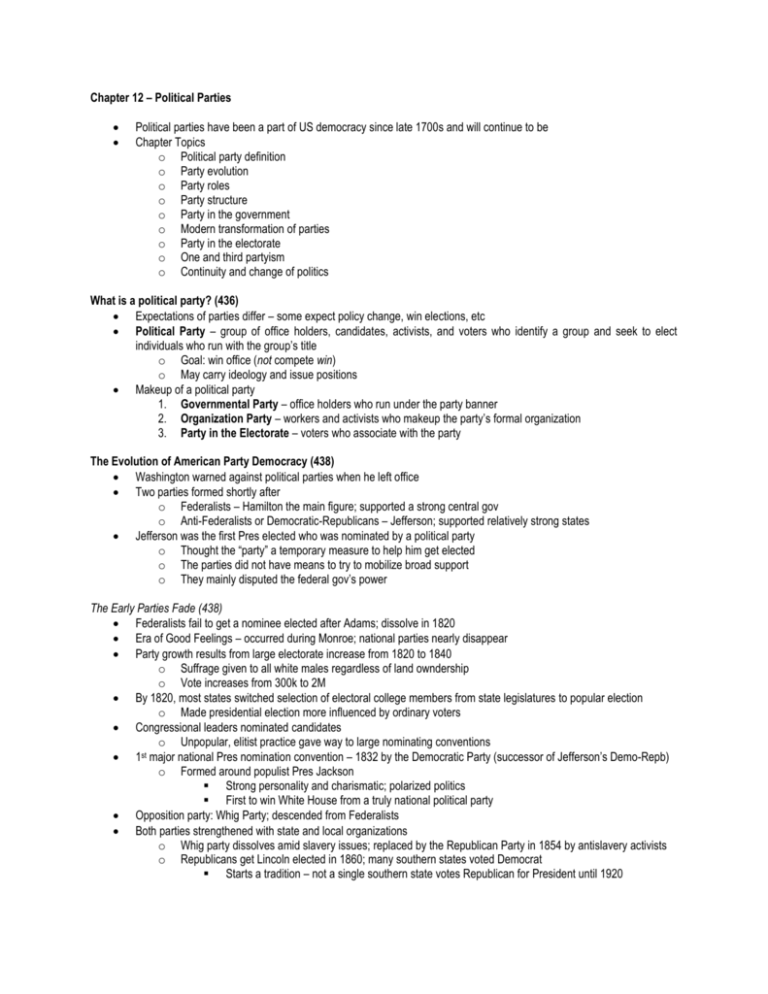
Chapter 12 – Political Parties Political parties have been a part of US democracy since late 1700s and will continue to be Chapter Topics o Political party definition o Party evolution o Party roles o Party structure o Party in the government o Modern transformation of parties o Party in the electorate o One and third partyism o Continuity and change of politics What is a political party? (436) Expectations of parties differ – some expect policy change, win elections, etc Political Party – group of office holders, candidates, activists, and voters who identify a group and seek to elect individuals who run with the group’s title o Goal: win office (not compete win) o May carry ideology and issue positions Makeup of a political party 1. Governmental Party – office holders who run under the party banner 2. Organization Party – workers and activists who makeup the party’s formal organization 3. Party in the Electorate – voters who associate with the party The Evolution of American Party Democracy (438) Washington warned against political parties when he left office Two parties formed shortly after o Federalists – Hamilton the main figure; supported a strong central gov o Anti-Federalists or Democratic-Republicans – Jefferson; supported relatively strong states Jefferson was the first Pres elected who was nominated by a political party o Thought the “party” a temporary measure to help him get elected o The parties did not have means to try to mobilize broad support o They mainly disputed the federal gov’s power The Early Parties Fade (438) Federalists fail to get a nominee elected after Adams; dissolve in 1820 Era of Good Feelings – occurred during Monroe; national parties nearly disappear Party growth results from large electorate increase from 1820 to 1840 o Suffrage given to all white males regardless of land owndership o Vote increases from 300k to 2M By 1820, most states switched selection of electoral college members from state legislatures to popular election o Made presidential election more influenced by ordinary voters Congressional leaders nominated candidates o Unpopular, elitist practice gave way to large nominating conventions 1st major national Pres nomination convention – 1832 by the Democratic Party (successor of Jefferson’s Demo-Repb) o Formed around populist Pres Jackson Strong personality and charismatic; polarized politics First to win White House from a truly national political party Opposition party: Whig Party; descended from Federalists Both parties strengthened with state and local organizations o Whig party dissolves amid slavery issues; replaced by the Republican Party in 1854 by antislavery activists o Republicans get Lincoln elected in 1860; many southern states voted Democrat Starts a tradition – not a single southern state votes Republican for President until 1920 Democrats and Republicans: The Golden Age (440) Since 1860, Republicans and Democrats have been the dominant political parties Republicans often called the GOP (Grand Old Party) The Modern Era Versus the Golden Age (441) “Golden age” of parties existed from about to 1870s to 1920s o Machines – big-city party orgs that recruit members with tangible incentives; high degree of control o Fueled by immigrants – gave them upward social mobility o Party and Gov almost interchangeable – sponsored services, entertainment, and employment o Intense devotion resulted in 75%+ voter turnout (today averages about 50%) Is the Party Over? (441) Government takes over party roles – prints ballots, conducts elections, welfare, etc o Social services become seen as rights not as privilege in exchange for votes Direct Primary – selection of party candidates through ballots of qualified voters; gave power to electorate Civil Service Laws – require appointment on basis of competitive exams o Patronage – jobs, grants, or favors given as rewards for political support o Spoils System – firing of defeated parties’ office holders and replacement with those loyal to newly elected Progressive movement – politically liberal reformers who brought on these changes to parties Post WWII Changes o Broad education leads to issue-oriented politics (focus on specific issues rather than party labels) Issue politics often cut across parties Encourages ticket-split (vote for candidates of differing parties) o Population growth; shift to suburbs Urban cities dense and easily organized; suburbs are sprawling District population grew so much that going to every door became impractical TV emphasizes personality over abstract party labels Political Consultant – professional who manages political campaign adverts The Parties Endure (444) Still reliable vehicles for mass participation Parties abilities to stay alive o Enlarge the practicing electorate Exception: Southern Democrats tried to exclude blacks (contracted electorate) o Adapt to changes; flexibility and pragmatism ensure survival and success o Provide strong competition for each other and voters in general o New research indicates parties are rebounding from 1990s lows The Roles of the American Parties (445) Mobilizing Support and Gathering Power (445) Office holders can rely on their parties for support on tough choices Coalition – group of interests that join forces to elect officials Continuing mutual interest causes current coalitions to stay so each election does not need new coalitions A Force for Stability and Moderation (445) Parties tame extremes to attract the most voters out of a practical desire to win the election Contradictions inherent in coalitions strengthen the nation Unity, Linkage, and Accountability (446) Framers separated powers to protect liberty but in such made gov hard to coordinate and act timely o Parties bring unity Party affiliation is a basis for linkage among different people o Laterally among branches and vertically among local, state, and national gov o Between the candidate and voter o Unifies the nation by forcing sections to group with each other in order to be less of a minority The Electioneering Function (447) Parties help gov by finding people to run for office and making election competitive Thousands of candidates and staff are recruited by parties each election Staff of winning candidates often receive key gov positions as a reward Party as a Voting and Issue Cue (447) Party is a valuable filter Less informed voters use the party as a quick shortcut for interpreting issues Policy Formulation and Promotion (447) Senator Long said that parties were essentially the same National Party Platform – goals of a political party promulgated at the national convention o Usually rewritten every 4 years to highlight major issues for the Pres convention o 2/3 of the winning party’s policy gets implemented o ½ of the losing party’s policy get implemented too Recently party platforms more like Pres platforms o Non-controversial to appeal to a broad range of voters o Written for the candidate, not for the party The Basic Structure of American Political Parties (449) Political Party Organization o National – quadrennial national convention; national chairpersons; national committee o State – state committees and conventions; congressional district committees o Local – city / county committees, precinct and ward committees, party activists and volunteers; party voters National Committees (449) Democrat National Convention (DNC) est. 1848 and RNC in 1856 National Republican Congressional Committee (NRCC) setup when radical republicans were feuding with moderate successors to Lincoln o Democrats setup something similar o Both parties setup committee for the Senate after the 17th Amendment (direct election of senators) These six major committeees are the major service-oriented orgs in American politics Leadership (450) Elected by the national committee if the Pres is not in their party National Convention – held by each party to nominate their Pres and VP candidates o Chairperson plans the Pres nominating convention o Carefully coordinated to represent the party well to voters States and Localities (451)

